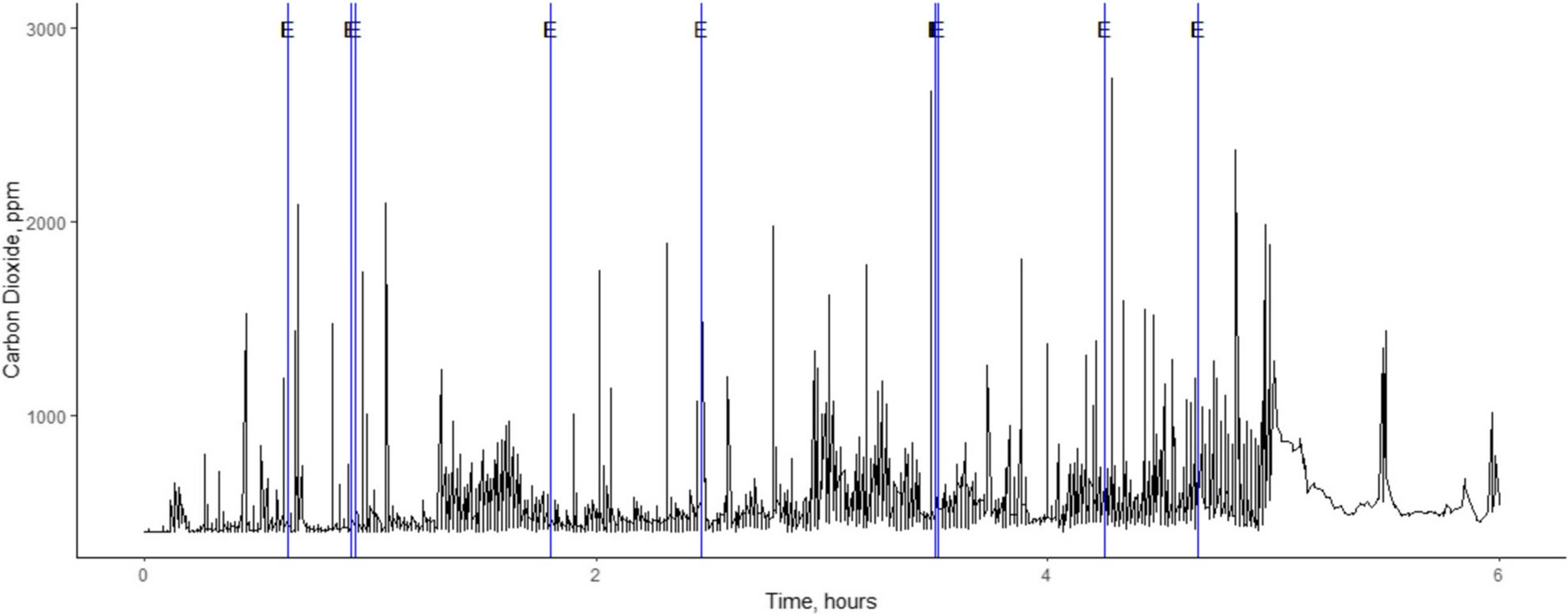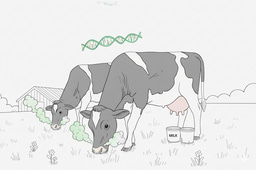Horses, Sensors, and CO₂ Spikes: Can We Monitor Manure in Real Time?
Published in Agricultural & Food Science and Zoology & Veterinary Science

Can wearable CO₂ and VOC sensors detect defecation and urination events in horses? A new study puts it to the test
Published in Dairy Science and Management
June 2025
In a world increasingly driven by data and precision agriculture, the idea of using wearable sensors to monitor livestock behavior has great appeal—especially for tracking manure emissions, which are both an environmental concern and a management challenge. A recent study by Wright et al. (2025) took a novel approach: placing open-source gas sensors on horses’ tailheads to detect spikes in CO₂ and volatile organic compounds (VOCs) during defecation and urination events.
The Study at a Glance
Researchers monitored four horses in a barn setting over nine days, collecting gas sensor data and validating emission events through video observation. They then applied machine learning models—including Random Forest, Support Vector Machine, and Extreme Gradient Boosting—to determine whether the sensor data could accurately predict these events.
What They Found
-
CO₂ and VOC spikes often coincided with defecation and urination—but also occurred during unrelated behaviors, introducing significant noise.
-
Machine learning algorithms struggled to accurately classify events, especially with such imbalanced data (only a small fraction of timepoints involved actual emissions).
-
Even after testing oversampling, undersampling, and model tuning, predictive performance remained low.

This figure shows CO₂ concentration readings from one horse over a single day. Spikes marked with vertical lines represent confirmed defecation or urination events. While some CO₂ peaks align with these events, many other peaks occur independently—highlighting the challenge of accurately detecting manure events based on gas concentrations alone.
*Figure 3 from Wright et al. (2025), Dairy Science and Management. Shared under CC BY-NC-ND 4.0. https://doi.org/10.1186/s44363-025-00003-z
Why It Matters
This study underscores both the promise and limitations of low-cost, open-source sensing technologies for behavior-based environmental monitoring in livestock. While there’s clear potential, the data show that simply detecting gas spikes is not enough—especially in complex barn environments where other sources of CO₂ may interfere.
Looking Ahead
Wright et al. suggest future research should:
-
Explore multi-sensor approaches (e.g., combining motion, gas, and temperature data)
-
Move experiments into open pastures, where environmental noise may differ
-
Consider edge computing strategies to reduce the data burden and improve real-time detection
Full Paper
Wright, R.K., Ganino, A. & White, R.R. Open-source carbon dioxide and volatile organic compound sensing and associations with defecation and urination events in horses. Dairy Sci. Manag. 2, 2 (2025). https://doi.org/10.1186/s44363-025-00003-z
Follow the Topic
-
Dairy Science and Management

This is an open access peer-reviewed journal that aims to publish innovative research about the management of dairy animals, the production of dairy products and the related food security considerations.
Related Collections
With Collections, you can get published faster and increase your visibility.
Microbial Sensitivity Testing in Dairy: Staphylococcus aureus and Antibiotic Resistance
The dairy industry is a cornerstone of global food security and nutrition, yet it faces significant challenges due to the rising incidence of antibiotic resistance, particularly related to Staphylococcus aureus and its associated staphylococcal infections. As we continue to advance our collective understanding in this area, we can better equip ourselves to develop effective management strategies that will safeguard animal health, enhance dairy production, and ultimately contribute to the well-being of consumers.
Antibiotic resistance in bacteria poses a serious threat not only to dairy cattle but also to public health, as resistant strains can be transmitted through food products. The implications of this issue are far-reaching, influencing not only the economic viability of dairy operations but also the overall sustainability of the food system. Therefore, it is crucial to deepen our knowledge surrounding microbial sensitivity testing. This can aid in identifying effective treatment protocols and minimizing the development of resistant strains.
Recent advances in the field have demonstrated the potential of rapid microbial sensitivity tests, allowing for quicker diagnosis and treatment decisions. Techniques such as molecular diagnostics and whole-genome sequencing have significantly improved our understanding of the genetic determinants of antibiotic resistance in Staphylococcus aureus . Moreover, research into alternative therapies, including probiotics and bacteriophages, shows promise in mitigating the risks associated with antibiotic use in dairy herds.
We invite researchers to contribute to this special Collection, as your insights and findings are essential for addressing the challenges posed by antibiotic resistance in the dairy sector. Topics of interest include but are not limited to:
- Microbial sensitivity testing methodologies - Resistance mechanisms in Staphylococcus aureus - Epidemiology of staphylococcal infections in dairy - Alternative treatments for antibiotic-resistant infections - Impact of antibiotic use on dairy herd health - Policy implications for antibiotic stewardship - Consumer perceptions of antibiotic use in dairy - Technological innovations in microbial diagnosticsThis Collection supports and amplifies research related to SDG 2, Zero Hunger.
All submissions in this collection undergo the journal’s standard peer review process. Similarly, all manuscripts authored by a Guest Editor(s) will be handled by the Editor-in-Chief. As an open access publication, this journal levies an article processing fee (details here). We recognize that many key stakeholders may not have access to such resources and are committed to supporting participation in this issue wherever resources are a barrier. For more information about what support may be available, please visit OA funding and support, or email OAfundingpolicy@springernature.com or the Editor-in-Chief.
Publishing Model: Open Access
Deadline: Feb 13, 2026



Please sign in or register for FREE
If you are a registered user on Research Communities by Springer Nature, please sign in